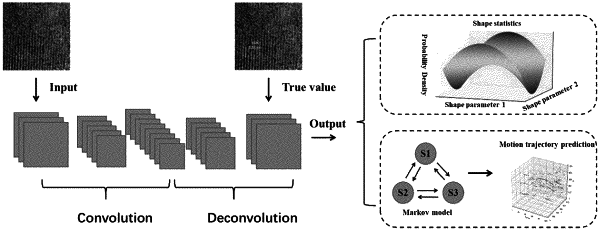| CPC G06T 7/0002 (2013.01) [G06F 18/214 (2023.01); G06F 18/217 (2023.01); G06N 3/08 (2013.01); G06T 7/20 (2013.01); G06T 7/62 (2017.01); G06V 10/30 (2022.01); G06V 20/695 (2022.01); G06T 2207/10056 (2013.01); G06T 2207/20081 (2013.01); G06T 2207/20084 (2013.01); G06T 2207/30241 (2013.01)] | 12 Claims |

|
1. A method for analyzing images of material characterization, wherein it comprises the following steps:
collect and mark samples of material characterization images to establish an image data set of material characterization, wherein the said image data set of material characterization comprises a first data set composed of first material characterization images marked with atomic species and crystal structure parameters, and a second data set composed of second material characterization images marked with edges and center points of microscopic particles and a third data set composed of third material characterization images marked with microstructure features;
establish an initial neural network model, and use the image data set of material characterization to train it to obtain a neural network model based on deep learning; and establish a dynamic statistical model;
input the characterization image of the material to be analyzed into the deep learning-based neural network model, and identify and analyze the output results, complete atom identification and interplanar spacing annotation, microscopic particle morphology statistics; and
input the third data set or output data of the deep learning-based neural network model into the dynamic statistical model to complete tracking of microstructure motion trajectory.
|